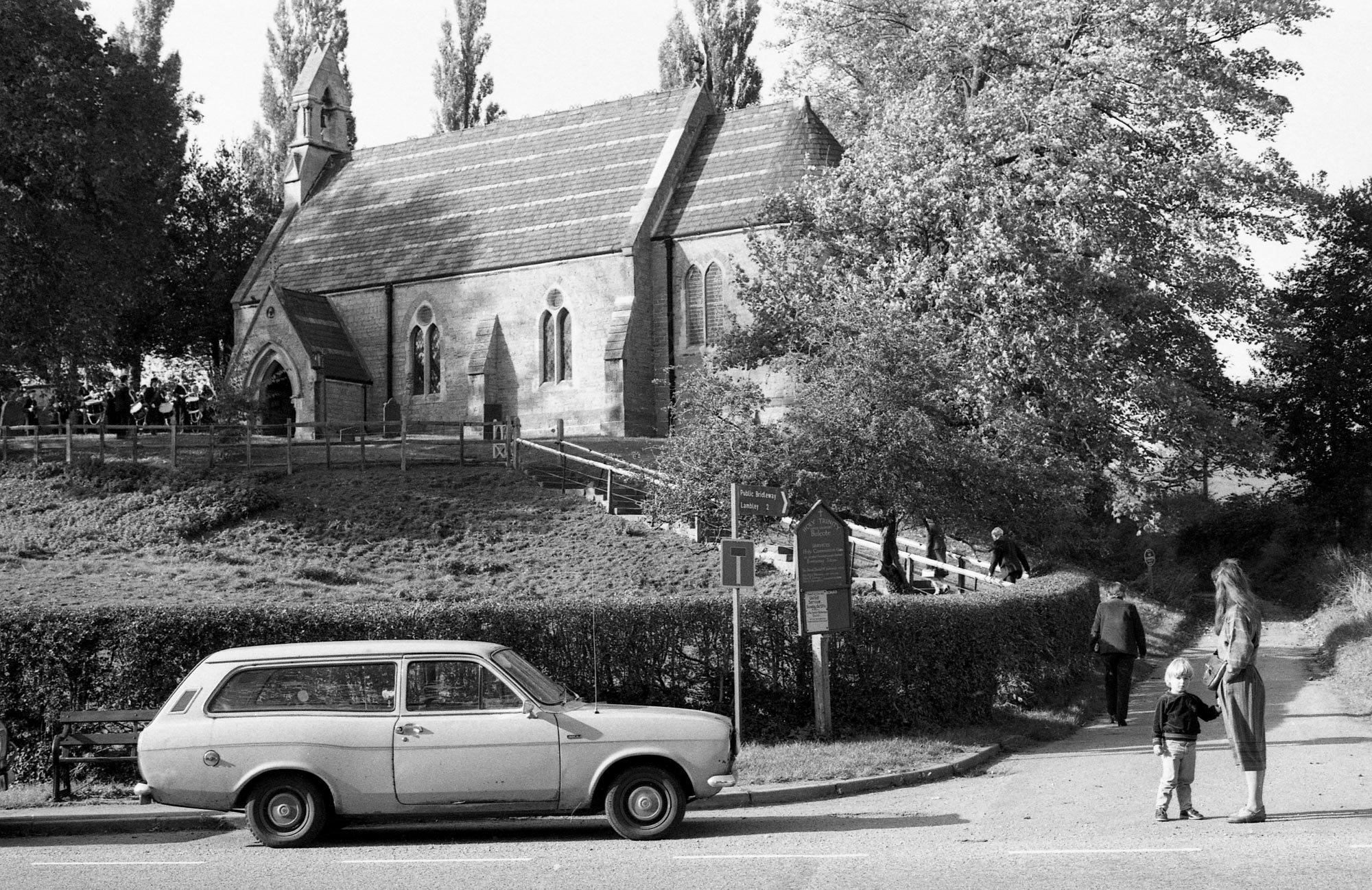Some time in 1983 Jessica and I travelled up to Nottinghamshire with Sam and Louisa, and renewed our friendship with Maggie and Mike Kindred who lived in Southwell’s Dover Street.

Here Jessica and Louisa have fun in the Kindred’s kitchen.
The reason for the visit was for me to run the Newark Half Marathon for the first time.
We took the opportunity to visit Bulcote Lodge, Jessica’s family home from the age of 8. Our two children had not been there before because their maternal grandparents had moved to Wiltshire some years earlier.
Sam was particularly intrigued by the sundial near the front door. Louisa wasn’t.
The duckpond had now dried up.
Bulcote’s Holy Trinity Church lies across the road from the house. Jessica contemplates the place of worship to which, more than twenty years later, Louisa was to return to marry Errol.
Little did I know what this trip would lead to. We eventually moved from Furzedown in South London to Newark in Nottinghamshire, and a lifelong friendship was cemented. Having discovered that Michael and I shared a passion for crosswords, it seemed natural, when I got bored with reading on my daily commute to London, to set him a puzzle. He solved it and retaliated. This exchange continued for some time. Other commuters, noticing what I was engrossed in, interrupted my work to ask for solutions to puzzles they were solving. I did not give them the answers, but helped them to work it out for themselves. After a while Mike and I decided to do something a bit more ambitious and write a book which took students through a series of graded puzzles with the object of their being competent to solve a daily cryptic puzzle in any of the newspapers. I might say that, in doing so, our own solving abilities became vastly improved. When we began, I would spend my whole journey on the Times Crossword, often without finishing it. Eventually I would use a stopwatch and several times took less than five minutes. This book became, in 1993, ‘Chambers Cryptic Crosswords and How to Solve Them’. It remained in print, with a number of reprints and


going into a second, improved, edition for just short of twenty years, until Chambers was finally taken over by a company which did not want to use it because they specialised in e-books. Not being able to break into a daily newspaper team in those early days, we decided to set what are called advanced cryptics. These are much more difficult, themed, puzzles found in the weekend newspapers, the editors of which accept puzzles from anyone who can meet the standard. We began with The Times Listener, generally recognised as the most complex of this genre. Now we had to have a pseudonym. So Mordred was born. I have always loved Arthurian legend, and as a setter, fancied myself as an evil Knight. Mordred was King Arthur’s treacherous nephew. The ‘dred’ bit fitted nicely with Michael’s surname, and as has been mentioned by more than one sorrowful solver, the whole is a homophone for more dread. We set a couple of joint puzzles as Mordred until, on the editor’s advice, we split up (although remaining very good friends). I became Mordred and Michael continued to set as Emkay.
I continued to compose puzzles for The Listener and was soon setting for other newspapers and magazines. Some puzzles were to appear in collections in books and I was to feature in Collins A-Z of Crosswords. There is more to come on my development in this field.




